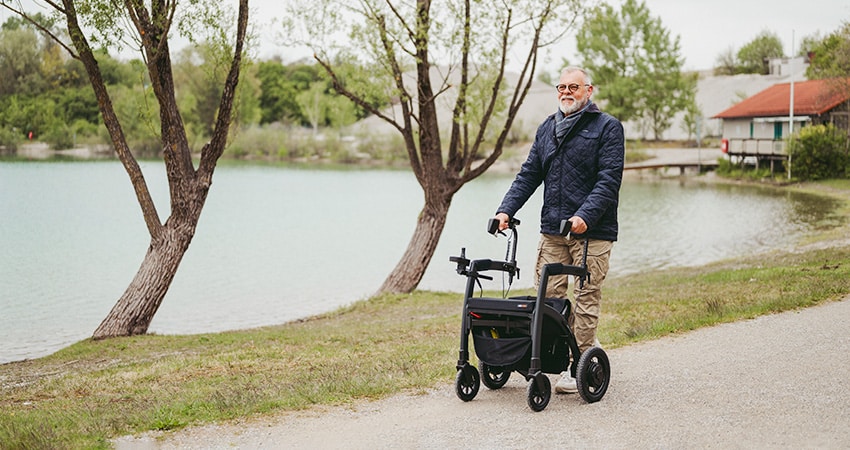Fall prevention is crucial, especially for older adults who are at high risk of serious injuries. A fall is defined as an event which results in a person coming to rest inadvertently on the ground or floor or other lower level, with approximately 37.3 million falls severe enough to require medical attention occurring each year globally. [1]
Falls and fall-related injuries are a common and serious problem for older people. People aged 65 and older have the highest risk of falling, with 30% of people older than 65 and 50% of people older than 80 falling at least once a year. [2]
Not only can falls themselves result in injury, but the likelihood of long-term impacts on health and well-being increases when in conjunction with a delayed initial recovery or long-lie.
A delayed initial recovery is classed as when the person remains in the fallen position for more than ten minutes, with evidence suggesting that this results in reduced confidence, increased anxiety, and development of post-fall anxiety syndrome as part of the falls cycle. This leads to life choices that reduce mobility, in turn increasing risk. Any falls risk reduction strategy should therefore consider both fall prevention and timely post-fall intervention.
There are a number of approaches that can be adopted to reduce the risk of falls, particularly educational, rehabilitative, adaptive, and compensatory. These approaches are rarely implemented in isolation and can complement each other to create a holistic package of intervention that both limits risk and maximises engagement in meaningful and purposeful activity.
Equipment, such as a mobility aid, is generally used to compensate for an identified need or risk, but in turn can form part of a rehabilitative approach.
Case study: the use of a rollator for someone with an identified risk of falls
The person has reduced mobility caused by a combination of arthritis, muscle atrophy, reduced exercise tolerance, fatigue, and some balance deficits, both static (when still) and dynamic (when moving).
They are over 75 years old and have fallen twice in the previous year, resulting in minor physical injuries. However, the falls have had a big impact on the person’s confidence, resulting in them choosing to withdraw from social activities due to anxiety of further falls.
The person lives in a 2-storey property with a stairlift, and the environment has been risk assessed with recommendations made to further reduce falls, such as flooring, task lighting, temperature control, and furniture use.
They have previously been heavily engaged with local amateur sports teams and enjoyed occupations such as watching sporting fixtures at the weekend, meeting a close friend at the local pub and volunteering at the church which is a short bus journey away. All of these activities have stopped, unless supported by family who will provide transport and use a wheelchair for the short distance into a venue.
The falls occurred when using a walking stick, which they had been using for some time outdoors, but used furniture at home to stabilise when needed.
The provision of a rollator helped with fall prevention and risk management because:
· The wider base of support that a stable rollator provided helped to manage reduced balance.
· The wheels facilitated easy manoeuvring with no need to lift and therefore maximised energy use.
· The cushioned seat enabled them to rest safely whenever and wherever they chose, reducing the anxiety about places of safety.
· The brakes helped the person to feel completely in control of their support, with no fear of it ‘running away from them’ or gaining in speed.
· The rollator is both an indoor and outdoor aid, so no need to change or store more equipment or get used to two devices.
The rollator in this case is used as a compensatory intervention in the first instance, however, becomes a crucial part of the rehabilitation plan to re-integrate with meaningful social activity. The increased mobility and engagement, facilitated with the rollator, increases use of key muscle groups, improving strength and exercise tolerance.
In achieving this, the post-fall cycle is impacted on positively, with reduced anxiety and further engagement, creating a positive cycle which promotes independence, health, and wellbeing.
Adam Ferry, The OT Service
